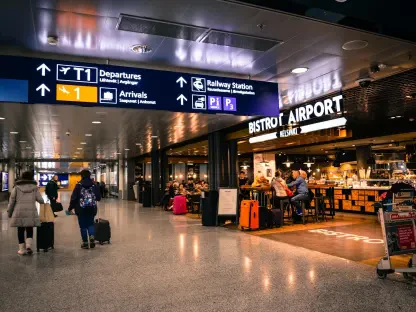Emergency Safety Solutions (ESS) has introduced a groundbreaking technological advancement in road safety, known as the H.E.L.P. Alert Network. This innovative framework serves as a real-time hazard communication system, aiming to significantly improve roadway safety for all users. By enabling the seamless exchange of information among vehicles and systems, the network’s objective is to diminish road hazards and heighten the effectiveness of responses during emergency situations. Core to the network’s operation are three integral components: the Notification Partner Network, the Protect Partner Network, and the Response Partner Network. Working in harmony, these elements gather, process, and disseminate hazard information, guiding both human and autonomous drivers in making well-informed decisions. This technology marks a pivotal shift towards integrating digital solutions in road safety, promising to address the shortcomings of traditional hazard signaling systems.
Enhancing Real-Time Communication and Responsiveness
Integration of Vehicles and Systems
The H.E.L.P. Alert Network forms a cohesive framework by facilitating the communication of pertinent information among various sources, including stationary vehicles and fleet platforms. Essential to its function is the Notification Partner Network, which aggregates data on congestion, road conditions, and incidents in real-time. This collected information is processed and transmitted through the Protect Partner Network, connecting to mobile and embedded navigation systems. The aim is to provide timely hazard alerts to motorists, enhancing their ability to react swiftly and appropriately in crisis scenarios.
In facilitating this dynamic integration, the network enhances overall responsiveness during emergencies, ensuring that motorists are aware of imminent risks. The integration is particularly beneficial to automated driving technologies that depend on accurate, real-time data. By improving road safety through effective communication, the H.E.L.P. Alert Network offers a significant upgrade over conventional systems that often lack promptness and precision in alert dissemination. Moreover, this integration paves the way for advancements in autonomous vehicle technology, supporting their operation in varying traffic conditions and contributing to their safe deployment on public roads.
Notification and Protection Mechanisms
The Notification Partner Network forms the backbone of the H.E.L.P. Alert system by gathering critical data from a myriad of input sources. These sources include disabled vehicles that encounter mechanical issues or accidents and fleet platforms managing multiple vehicles simultaneously. Information from these sources is pivotal for authenticating real-time conditions on roadways. However, the notification element alone does not suffice; the Protect Partner Network is essential for processing this data and distributing it across devices and systems used by drivers. This network ensures that warnings are timely and relevant, significantly enhancing road safety through proactive measures.
Alongside the integration of data acquisition, the Protect Partner Network plays a vital role by ensuring that information reaches end-users, both motorists and autonomous systems, accurately. Through embedded navigation systems and mobile applications, warnings can be visualized or issued audibly, allowing for instant driver response. Additionally, by catering to autonomous vehicle systems, it raises awareness, helping them adapt accordingly to changing road conditions. Together, the Notification and Protect Partner Networks create a robust new frontier for road safety, prioritizing informed decision-making and encouraging preventative measures against unpredictable hazards.
Building Partnerships for Public Safety
Response and Efficiency Enhancement
The efficiency of emergency responses is vastly improved through the Response Partner Network. This component ensures seamless communication between road users and emergency services, optimizing both the speed and quality of responses during incidents. By facilitating direct exchanges of information between vehicles and emergency responders, the network significantly reduces response times. This enhancement fosters an environment where emergency services are better equipped with real-time data, allowing them to act more strategically and effectively in preserving safety on the roads.
The collaboration among these networks signifies a monumental leap forward for public safety. The Response Partner Network bridges critical gaps in traditional communication pathways. It equips emergency responders with tools that expedite their arrival and enable them to comprehend situations more precisely before they reach the scene. Such capabilities are pivotal in minimizing the severity of accidents’ aftermath and crucially contributing to traffic flow normalization post-incident. Consequently, the partnership enhances public trust in road safety measures and stands as a testament to the collaborative potential between technology providers, government entities, and private sectors dedicated to public welfare.
Collaborations and Future Directions
ESS is actively pursuing collaborations with commercial fleets and public entities, recognizing that such partnerships are vital for expanding the reach and efficacy of H.E.L.P. technologies. This collaborative effort aims to increasingly incorporate the system’s components into a broader range of vehicles, platforms, and infrastructures. By targeting collaborations with commercial fleets, the initiative seeks to achieve a cascade effect; widespread adoption in the transport sector can amplify the network’s impact by broadening its data input sources and optimizing its output scope.
Future directions for the H.E.L.P. Alert Network will likely include further integration with automated systems and infrastructure developments. As communication networks expand, the potential for predictive analytics can be explored, offering even more proactive hazard identification and mitigation strategies. As a burgeoning field, these advancements signify a pivotal shift toward a safer, technology-driven future in road safety, with the potential to drastically reduce road-related accidents and fatalities.
Setting the Roadmap for Safer Roads
The H.E.L.P. Alert Network establishes an integrated framework for seamless communication of essential data among diverse sources, like stationary vehicles and fleet platforms. A key component is the Notification Partner Network, which gathers real-time information on traffic jams, road conditions, and incidents. This data is processed and relayed via the Protect Partner Network to mobile and embedded navigation systems, with the goal of delivering prompt hazard alerts to drivers. This improves motorists’ ability to react quickly and suitably in crisis situations.
The network significantly boosts emergency response times, ensuring drivers are informed about looming hazards. It’s especially advantageous for automated driving systems that require precise, up-to-date data. By fostering effective communication, the H.E.L.P. Alert Network elevates road safety beyond traditional systems, which often struggle with timely and accurate alerts. This network advances autonomous vehicle technology, aiding their adaptation to diverse traffic scenarios and supporting their safe integration onto public roads.









